
Springtime is my favorite time to forage. There’s an abundance of wild edibles growing this time of year. After a long winter of heavy, comfort foods, the woods and fields offer up bright, fresh ingredients to eat.
I encourage everyone I know to learn to identify a few wild edibles. Once you know what you’re looking for, you’ll be amazed at how often you see it in the wild. Just ask my kids. Every car ride goes something like this –
“Oooh, daylily shoots.”
“Purple dead nettle, oh, there’s stinging nettle too.”
“Pheasant back mushrooms! Oh, I gotta turn around and grab those.”
“Moooooom!”
“What?”
Free, wild food is all around us if we take the time to educate ourselves.
I want to share with you my absolute favorite things to make each spring. It’s also the easiest to make. You don’t have to go tromping through the forest for ingredients; the wild-edible used to make it is probably growing right in your yard.
Violet Syrup.
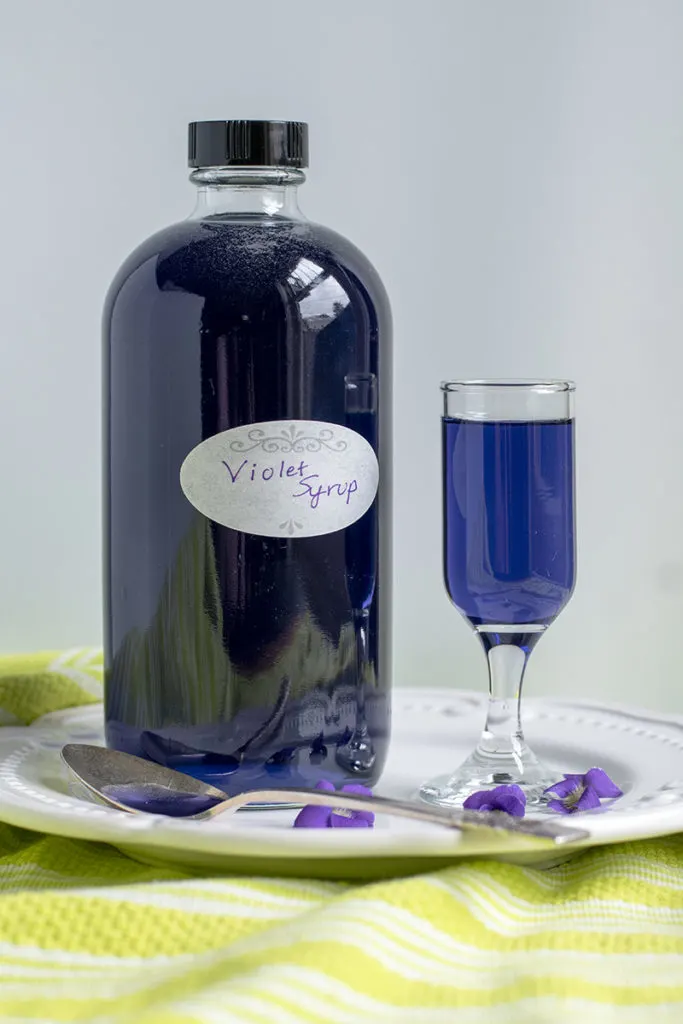
Every spring, after a few good rains, these beautiful purple flowers pop up on nearly everyone’s lawn. They peek out from piles of brown leaves on the forest floor; they grow along the stream – violets are everywhere.
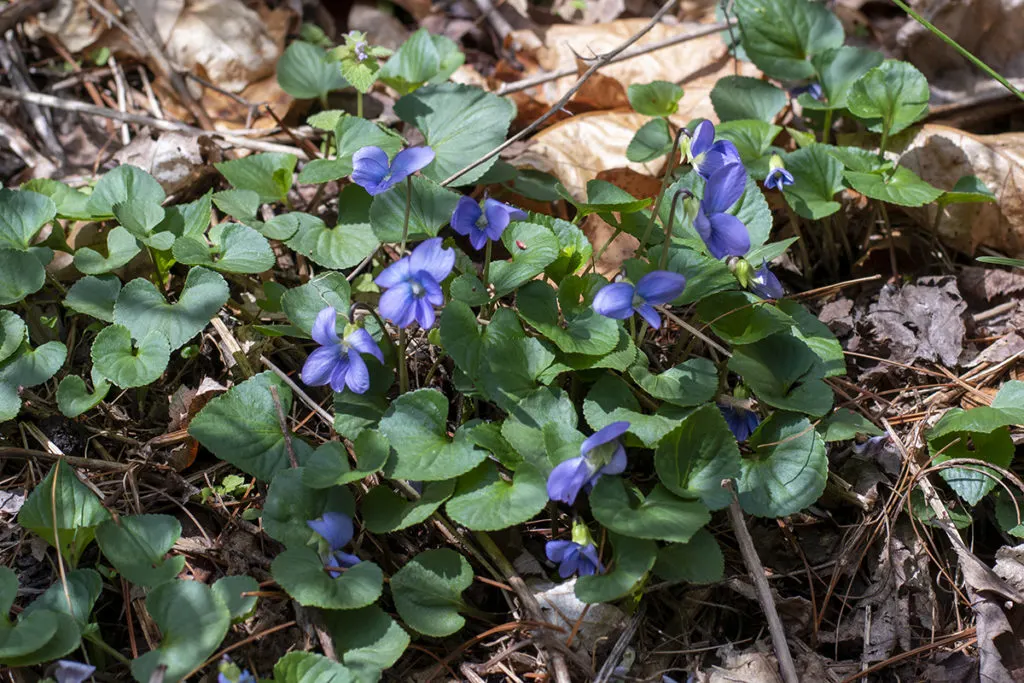
With a cup of sugar, you can make a gorgeous syrup with them. The flavor is light and fresh and slightly herbal. Unlike some other violet cordials, you won’t be overwhelmed by a heavy floral taste.
This also happens to be my kiddos’ favorite thing that I make in the spring. They love to stir it into club soda or lemonade.
You can also add it to frosting for a lovely light purple color with a fresh, sweet, green spring flavor.
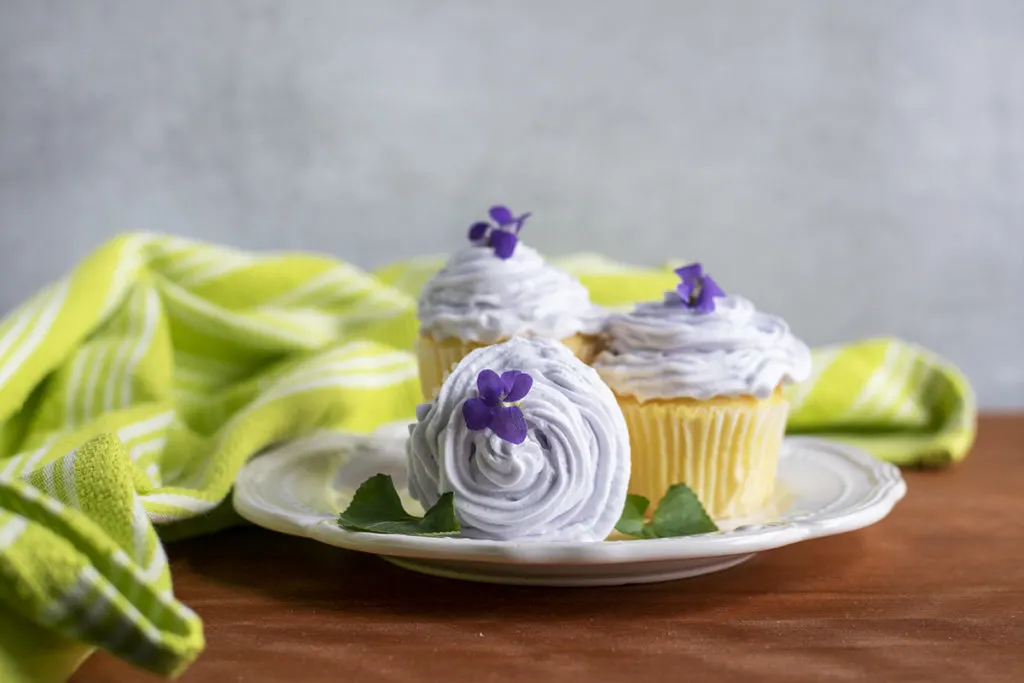
And of course, you can make beautiful cocktails with it too, like this amazing Violet French 75.
I’ll have recipes for all of these at the end.
Finding Violets
If you don’t see them when you look out your window over your lawn, finding violets is relatively easy. Keep your eyes open when you’re out and about, and you’ll see them. You can often find them in ball fields in public parks (right along with dandelions). Or a walk in the woods near a stream will often yield plenty of violets.
And of course, don’t be afraid to be that weirdo that knocks on a neighbor’s door, basket in hand, and ask if you can pick violets in their yard. I have done this plenty of times. Of course, it’s also polite to thank them by sharing a bit of your finished syrup. I suggest making them a batch of violet lemonade.
If you plan on picking violets somewhere other than your lawn, don’t forget to use proper foraging etiquette.
- Know the area and whether or not it’s been treated with chemicals.
- Know if you are allowed to forage in that area and if there are limits.
- Forage responsibly, leaving behind plenty for the animals that make that land their home.
I like to pick when it’s raining or just after the rain; the violets are so fresh and vibrant and happy. Plus, there’s something incredibly grounding about having your hands in the grass and flowers when it’s raining. Give it a try.
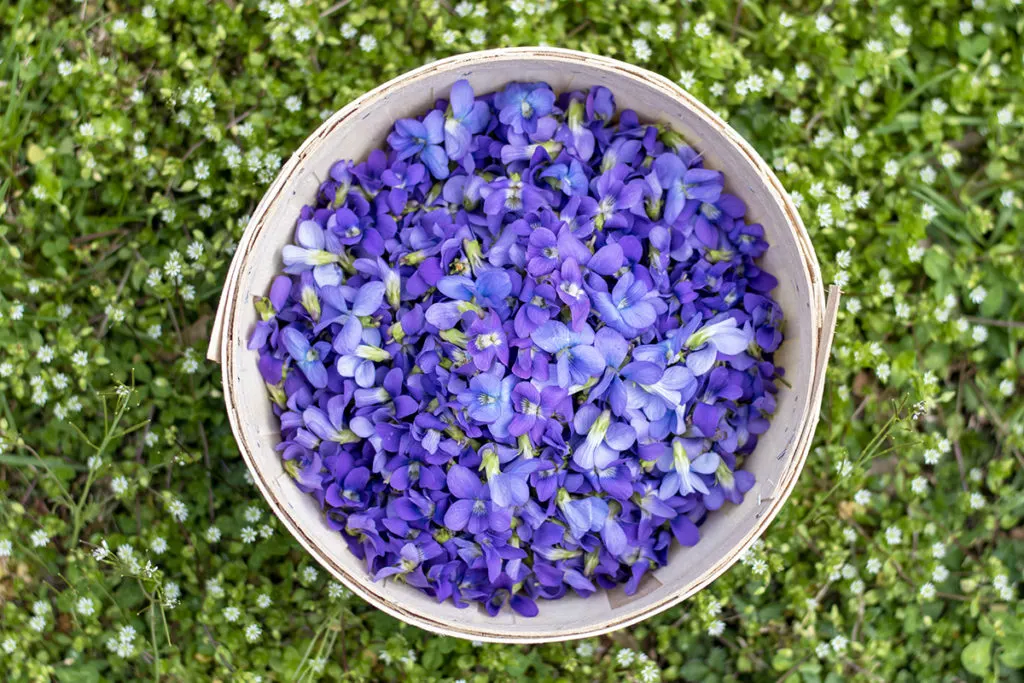
You’ll need to pick quite a bit; you’ll want about two cups of loose violets to end up with the one cup of petals you’ll need. Get your kids to help, or pop in your earbuds and listen to an audiobook, or simply use this quiet time to enjoy being outside.
To make your job easier later, you can try picking only the head of the violet. You won’t use the stem, only the petals.
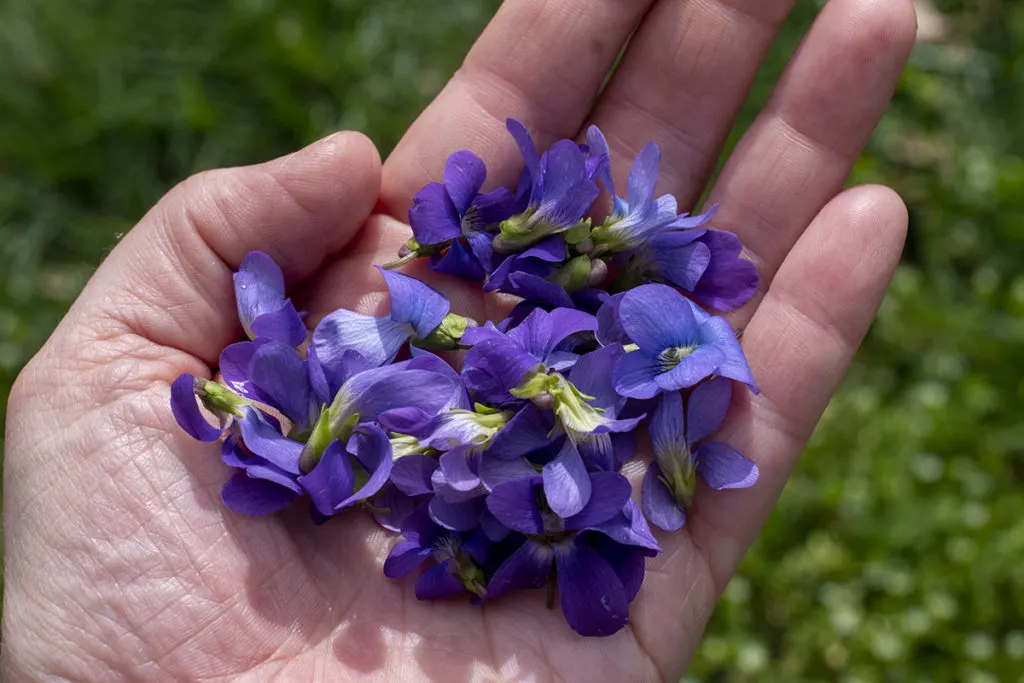
And, although it’s probably obvious, I will mention that you want purple violets. The white or pale lilac ones won’t impart much color.
A note about tap water
If you have hard water (alkaline), the minerals in the water will give you green syrup rather than blue. It’s almost a deep emerald. I have hard water, and I think the finished color is stunning. This won’t affect the flavor. However, if you have hard water and want the deep blue-purple syrup, use distilled water to achieve that nice blue color.
If you pick enough violets, I suggest making a batch of each to see which color you prefer. They are both truly lovely.
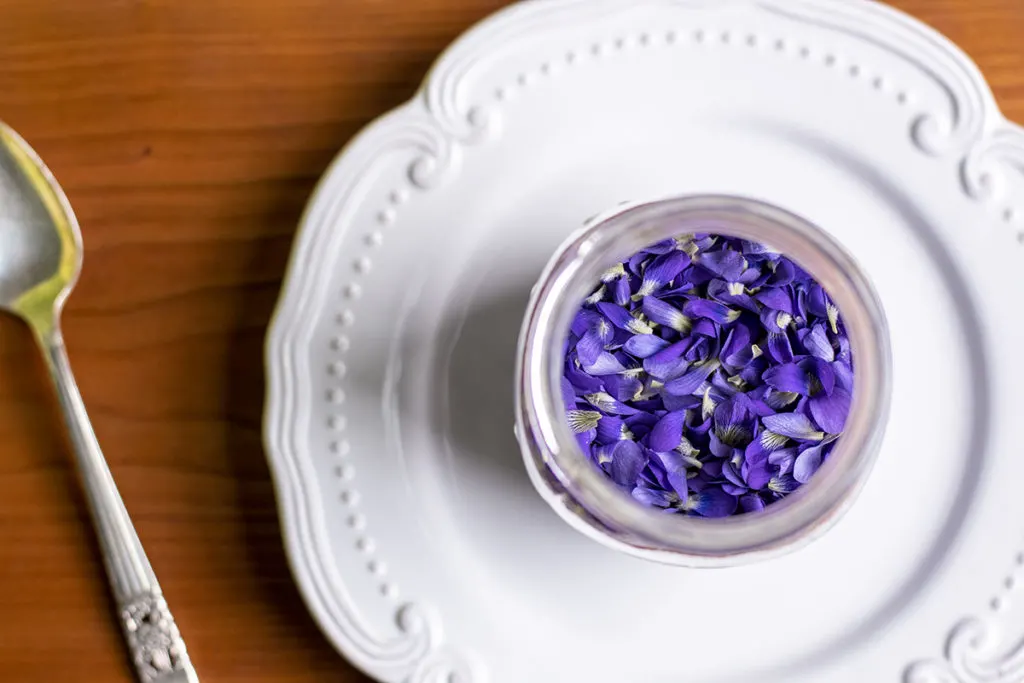
Violet Simple Syrup
- 1 cup of violet petals, gently packed, stems and calyxes removed (the calyx is the green part that holds the petals together)
- 1 cup of water
- 1 cup of sugar
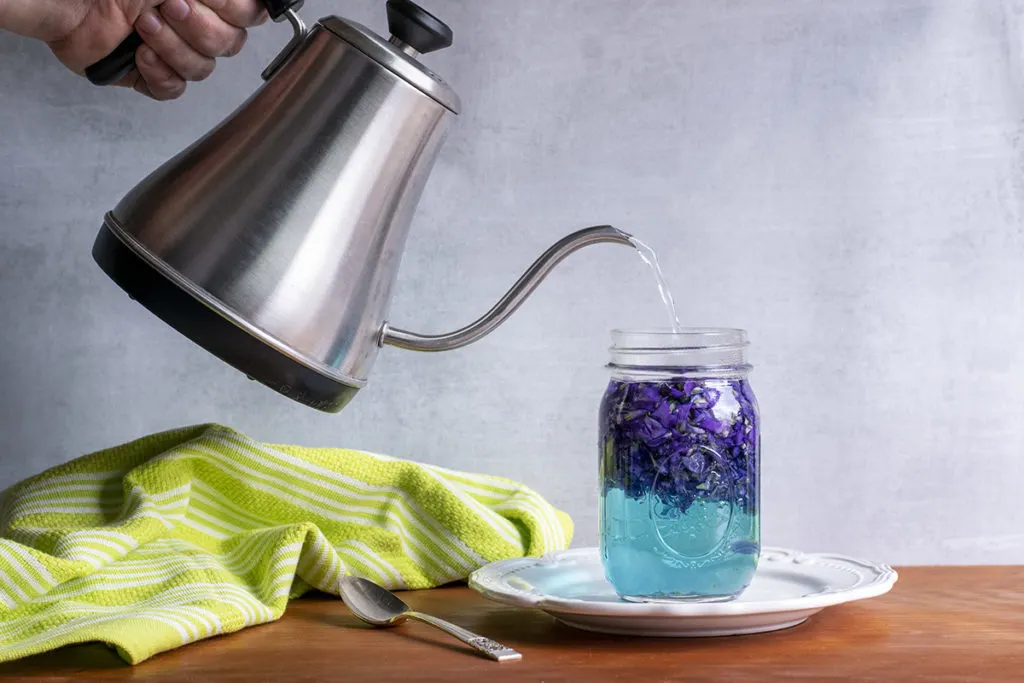
In a mason jar, add your petals and pour one cup of boiling water over them. Stir well with a wooden or plastic spoon. Put a lid on the jar and let it cool completely with the lid on for 24 hours.
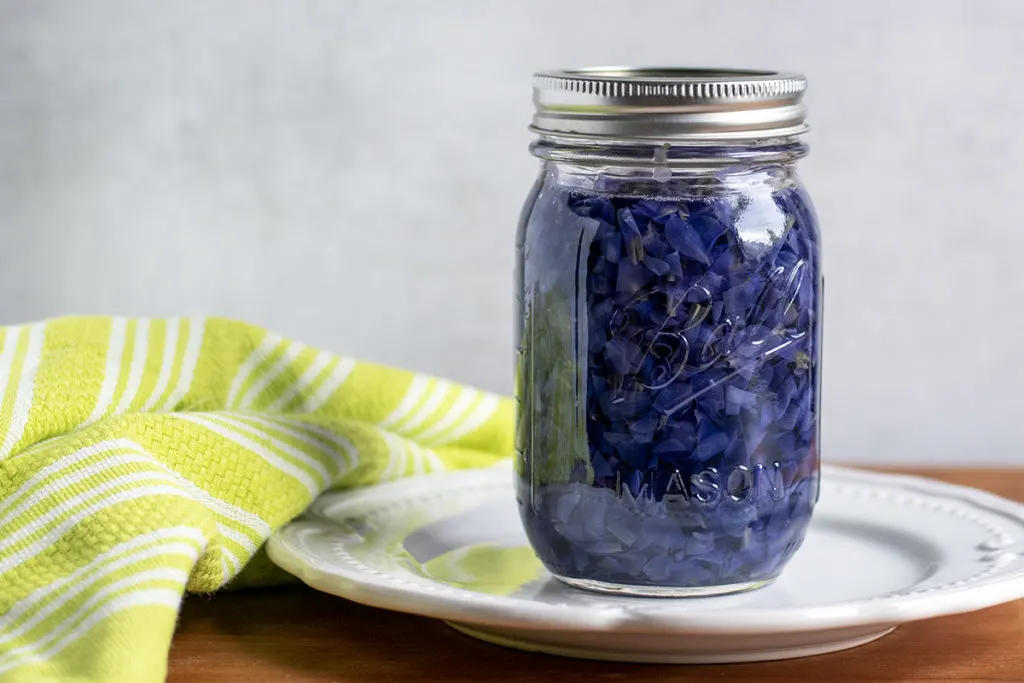
Strain the violet-infused water into another clean jar (a pint or quart jar is best) using a fine-mesh strainer. I find that a tea strainer works well too.
Place several inches of water in a small saucepan and set your jar full of violet water in the pan. Bring the water in the pan to a boil. Once the water is boiling, pour one cup of sugar into the jar (a canning funnel is helpful) and gently stir the sugar until it dissolves completely.
Using a potholder, carefully remove the jar of syrup from the boiling water and place it on a hot pad to cool. It may be a little cloudy but will clear up as it cools. This beautiful syrup will keep refrigerated for six months.
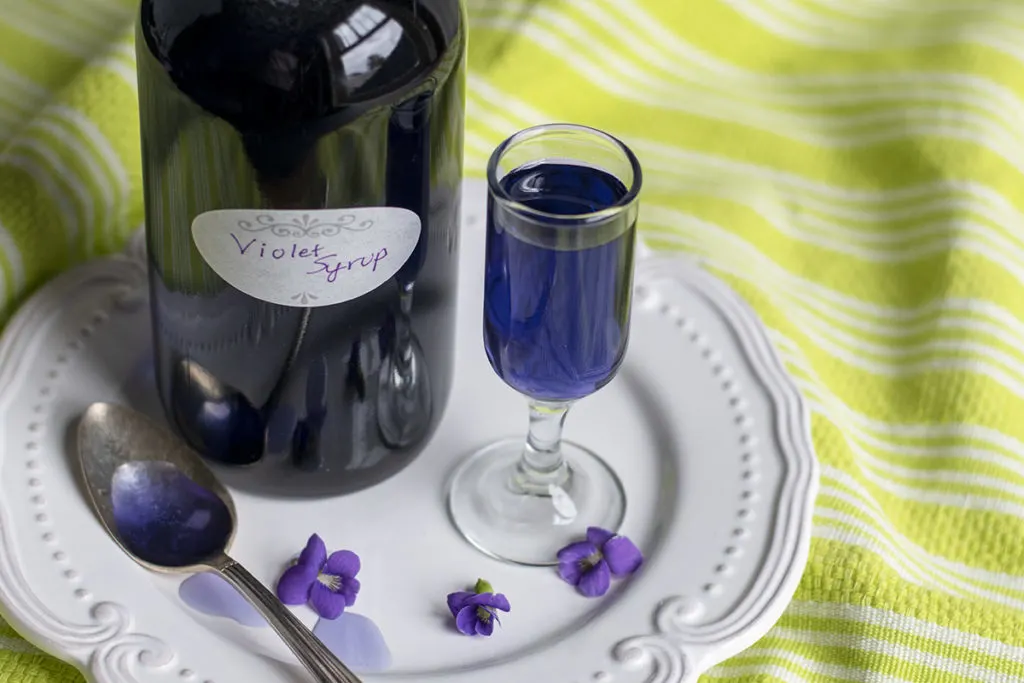
Violet Buttercream Frosting
- 2 cups of unsalted butter (for extra white frosting, I try to use the palest butter I can find)
- 6 cups of sifted powdered sugar
- 4-5 tbsp violet syrup
Whip the butter using a hand mixer or stand mixer for several minutes. The butter should be very pale and fluffy.
Begin adding the powdered sugar in, beating in 1 cup at a time. Once the sugar has been incorporated, beat the frosting for a few more minutes.
Slowly drizzle in the violet syrup and whip for another few minutes. You should now have a very light and airy buttercream frosting with a hint of violet color.
Violet Lemonade
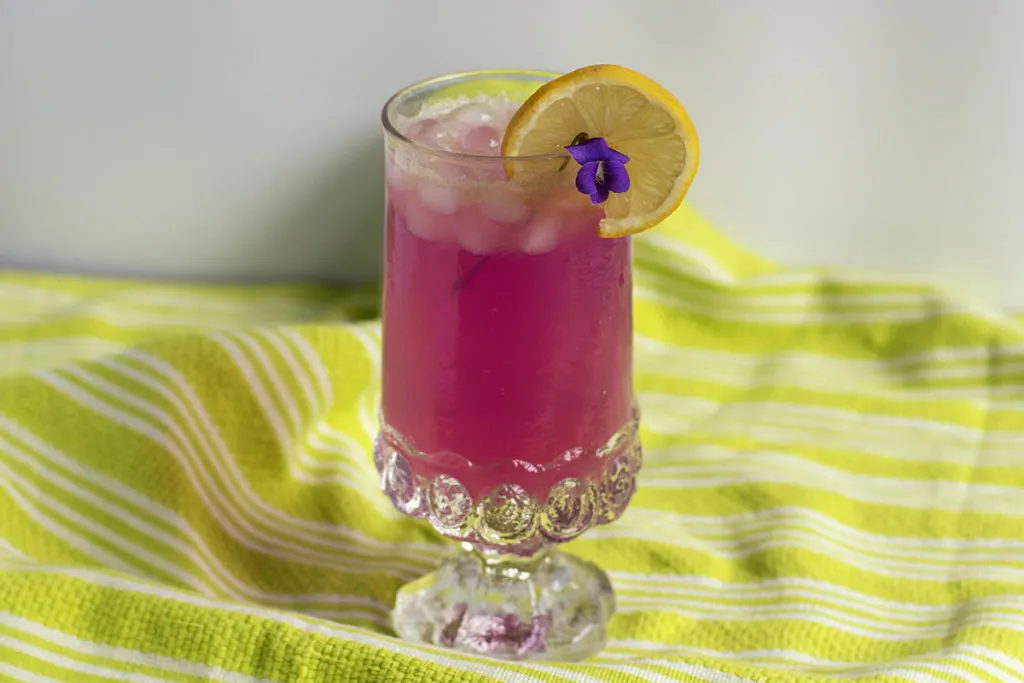
- 1/2 cup of simple syrup
- Juice of 8 lemons
- 6 cups of water
- ½ – 1 cup of violet syrup
Stir all the ingredients together in a pitcher. Add ice as desired. Sip and enjoy. For a fizzy treat, swap the water for club soda.
Violet French 75
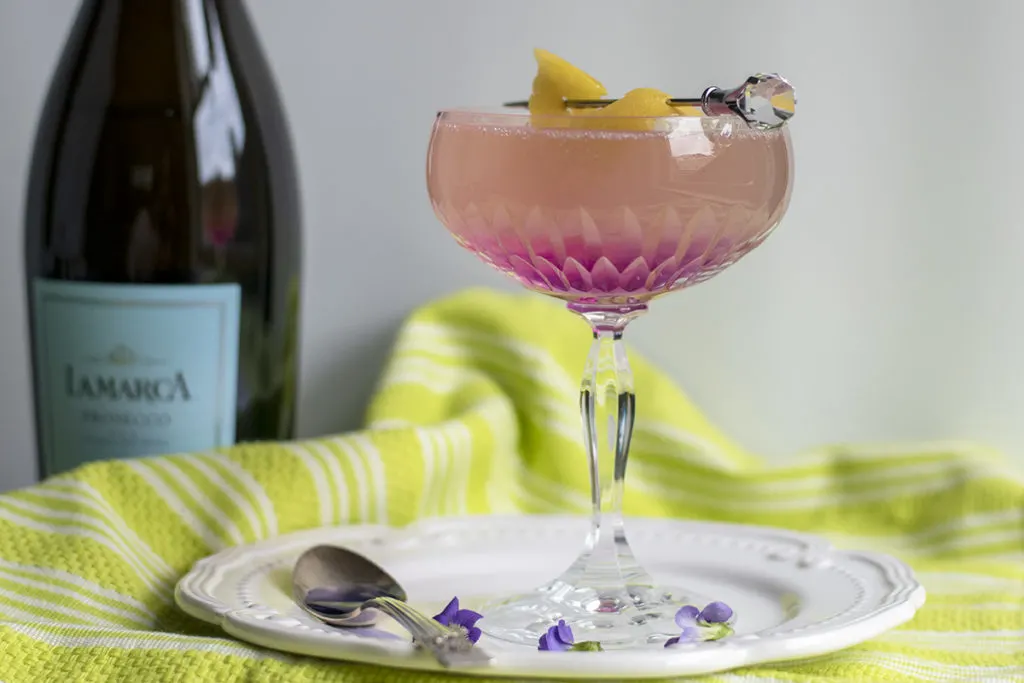
- 1 ½ oz. gin
- .75 oz freshly squeezed lemon juice
- 1 oz violet syrup
- Prosecco
Pour the gin, lemon juice and violet syrup into a chilled champagne flute or coupe. Top with prosecco, and serve with a lemon garnish.
Enjoying this lovely syrup is one of the highlights of spring for my family. I hope you will give this delicious treat a try this year.
Once you’ve tried violet syrup, you’ll want to try one of these fun dandelion recipes too.

Get the famous Rural Sprout newsletter delivered to your inbox.
Including Sunday musings from our editor, Tracey, as well as “What’s Up Wednesday” our roundup of what’s in season and new article updates and alerts.

